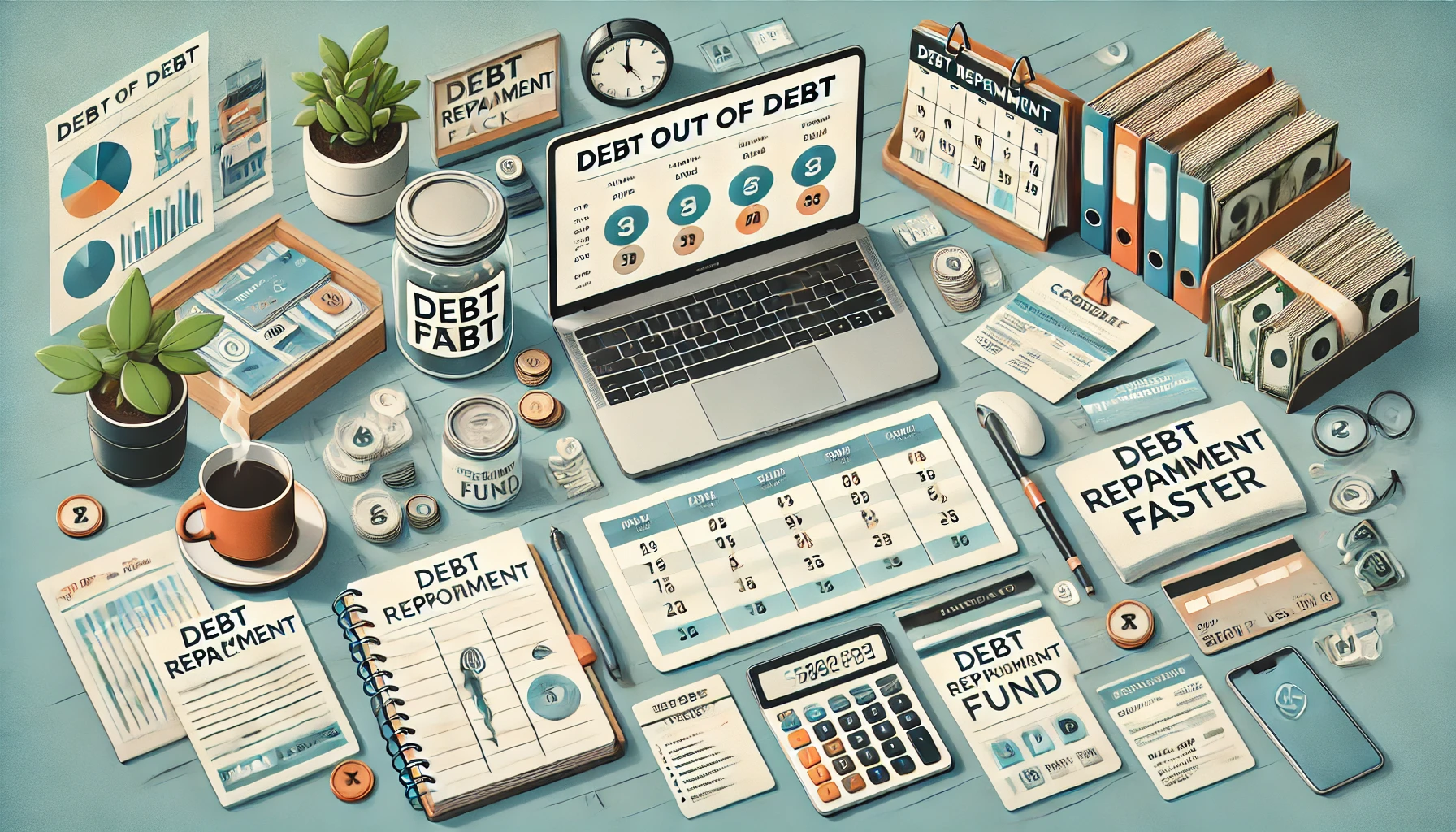Debt can feel like a heavy burden, quietly draining your energy, money, and peace of mind. Whether it’s credit cards, student loans, or personal loans, being in debt isn’t just a financial issue—it’s an emotional one too.
But here’s the good news: you can get out of debt faster than you think. With a solid plan, consistent effort, and the right mindset, you can take back control and start building the financial life you want.
This article shares practical, beginner-friendly tips to help you break free from debt—without feeling overwhelmed.
Step 1: Know Exactly What You Owe
Before you can get out of debt, you need to face it.
Make a list of all your debts, including:
- The name of each creditor
- The total amount owed
- The minimum monthly payment
- The interest rate
Example:
| Creditor | Balance | Minimum Payment | Interest Rate |
|---|---|---|---|
| Credit Card A | $1,200 | $40 | 19.99% |
| Credit Card B | $800 | $30 | 25.99% |
| Personal Loan | $2,500 | $120 | 9.5% |
Having this information in one place helps you choose the best strategy.
Step 2: Stop Accumulating New Debt
This might sound obvious, but it’s critical.
If you’re trying to dig your way out, stop digging. That means:
- Stop using credit cards
- Avoid new loans
- Say “no” to buy-now-pay-later offers
Use cash or a debit card while you work your way through repayment. This ensures your situation doesn’t get worse while you’re trying to improve it.
Step 3: Create a Debt-Focused Budget
Now that you’ve listed your debts, it’s time to adjust your budget. Create or revise your monthly budget with a focus on debt repayment.
Prioritize:
- Minimum payments for all debts (to avoid fees)
- Extra payments toward one selected debt (see below)
- Reduce non-essential expenses to free up more money
Every extra dollar helps. Even an extra $20 per month can make a difference over time.
Step 4: Choose a Repayment Strategy
There are two popular debt repayment methods. Choose the one that fits your mindset best:
1. Debt Snowball Method
- Pay off the smallest debt first, while paying minimums on the others.
- Once it’s paid, move to the next smallest.
- Benefits: Builds motivation and momentum quickly.
2. Debt Avalanche Method
- Focus on the debt with the highest interest rate first.
- Saves you the most money in the long term.
- Benefits: Mathematically the smartest option.
💡 Choose the one you’ll stick with—progress matters more than perfection.
Step 5: Automate Payments to Stay Consistent
Late payments can lead to extra fees and hurt your credit. Avoid that by automating:
- Minimum payments
- Any scheduled extra payments
Automation helps you stay on track—especially when life gets busy.
Step 6: Cut Unnecessary Expenses (Just for Now)
You don’t need to give up everything, but temporary sacrifices can help you reach your goal faster.
Consider pausing or reducing:
- Streaming subscriptions
- Eating out
- Unused gym memberships
- Clothing or gadgets you don’t need
Redirect that money straight toward your debt. It’s not forever—just a push to get you out faster.
Step 7: Increase Your Income (Even a Little Helps)
Sometimes cutting expenses isn’t enough. Increasing your income gives you more power to destroy debt.
Some ideas:
- Freelancing or remote side gigs
- Selling unused items online
- Offering local services (babysitting, tutoring, pet sitting)
- Taking overtime if available
Every extra dollar should go straight to your debt repayment.
Step 8: Use Windfalls Wisely
Tax refunds, work bonuses, gifts, or unexpected money can speed up your journey.
Instead of spending it on something new, put it directly toward your debt. You’ll feel much better seeing your balances drop than adding more stuff to your home.
Step 9: Stay Motivated With Milestones
Paying off debt can take time—so celebrate progress along the way.
Set small goals:
- “I’ll pay off $500 by the end of this month.”
- “I’ll close one credit card by summer.”
- “I’ll be debt-free in 12 months.”
Track your wins. Watch the balances drop. These little victories build momentum.
Step 10: Protect Your Progress
Once you’ve made some headway—or even become debt-free—don’t go back.
To stay out of debt:
- Build an emergency fund
- Avoid lifestyle inflation as your income grows
- Keep using a budget
- Only use credit with intention
Getting out of debt is amazing. Staying out of debt is even better.
Final Words: You Can Do This
Debt can be discouraging, but it doesn’t define you. You’re not bad with money—you just need a better system.
Start small. Stay consistent. Be patient.
With the right plan, smart habits, and the courage to start, you can pay off your debt faster than you ever imagined—and step into a more confident, peaceful financial life.
